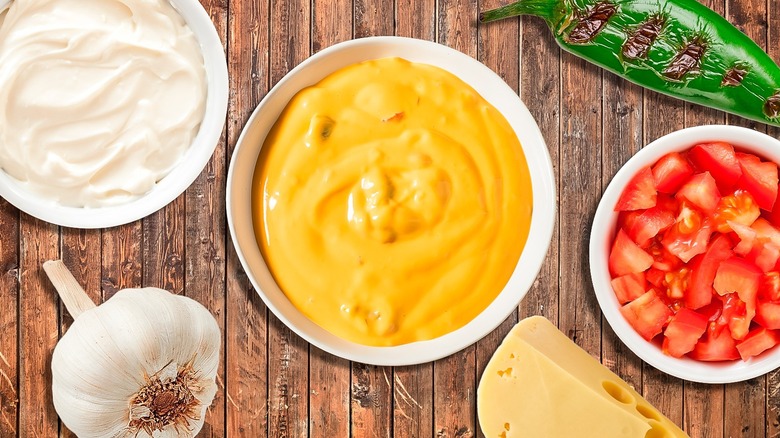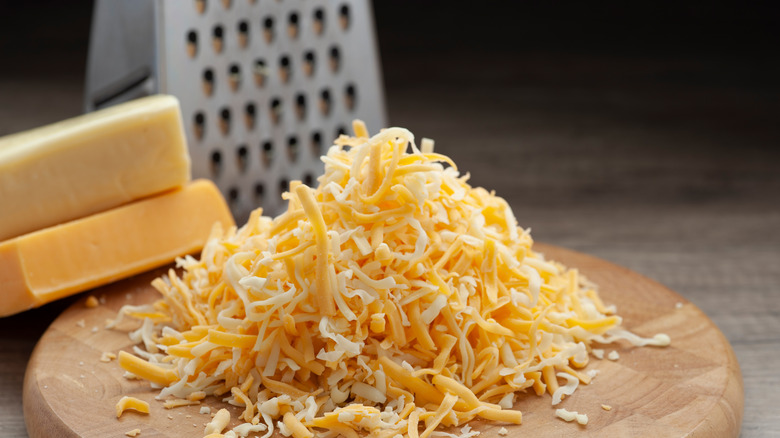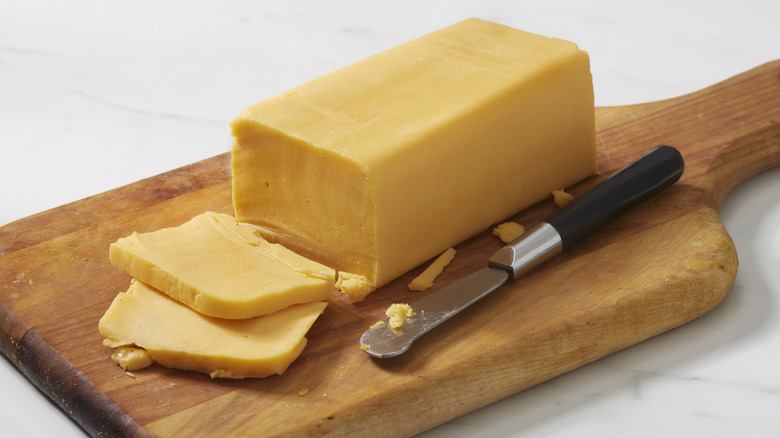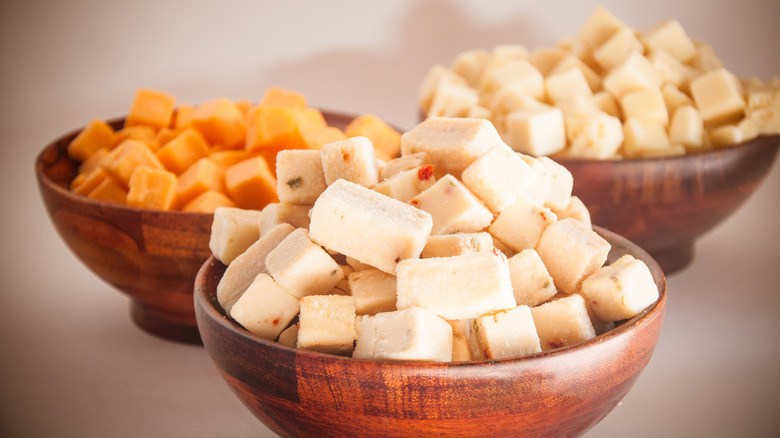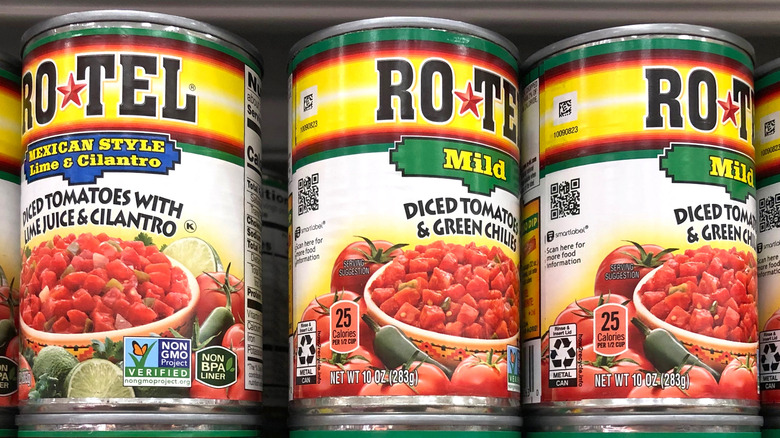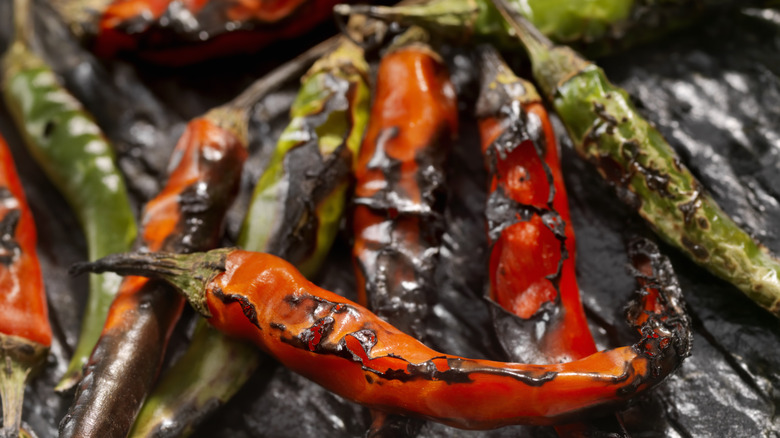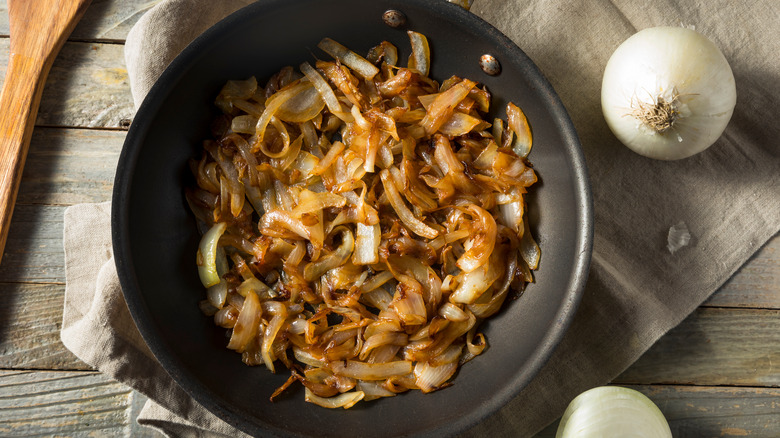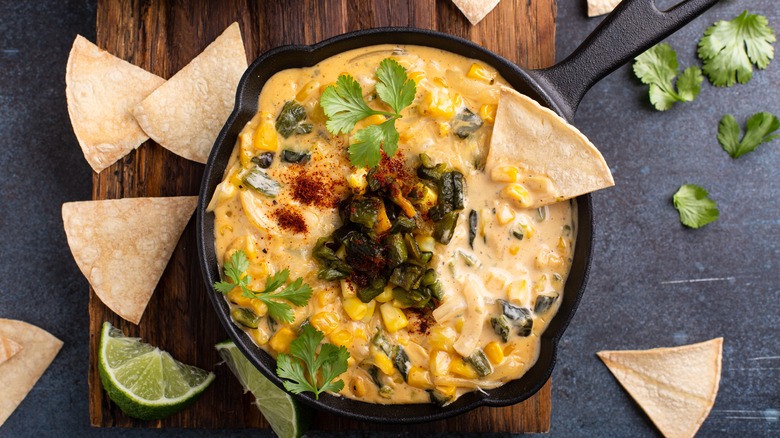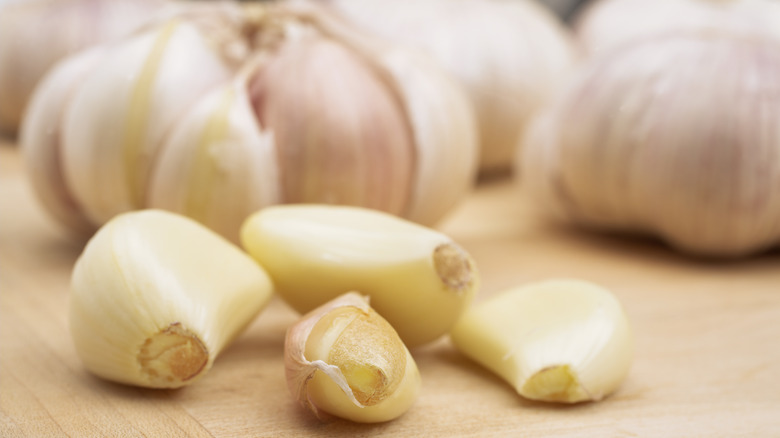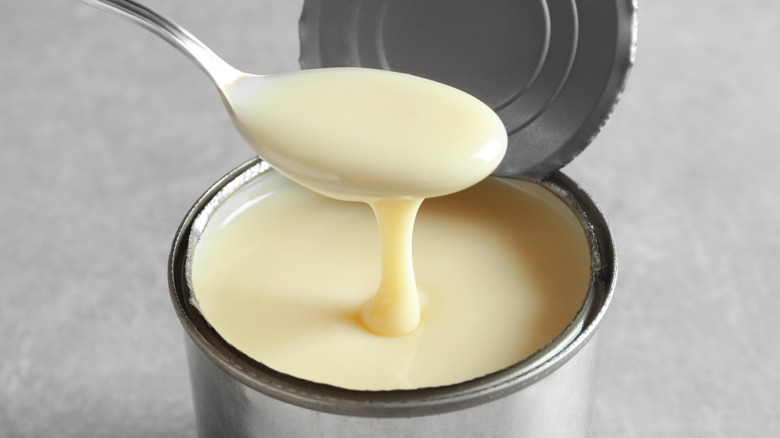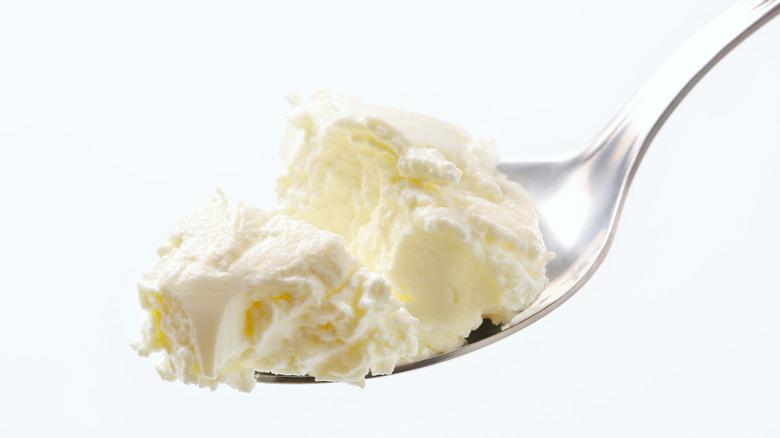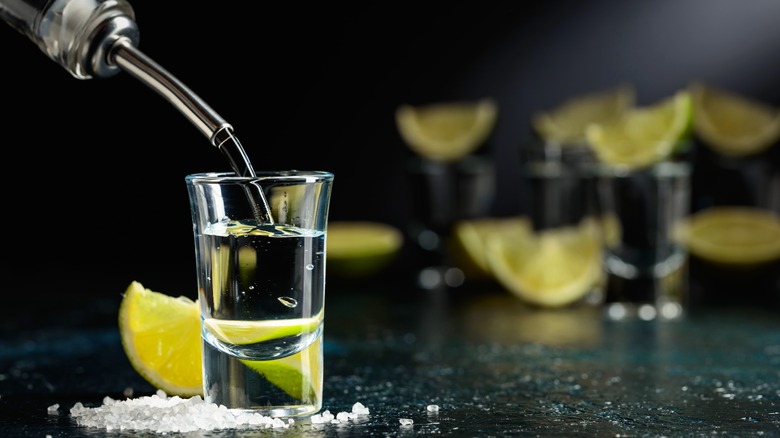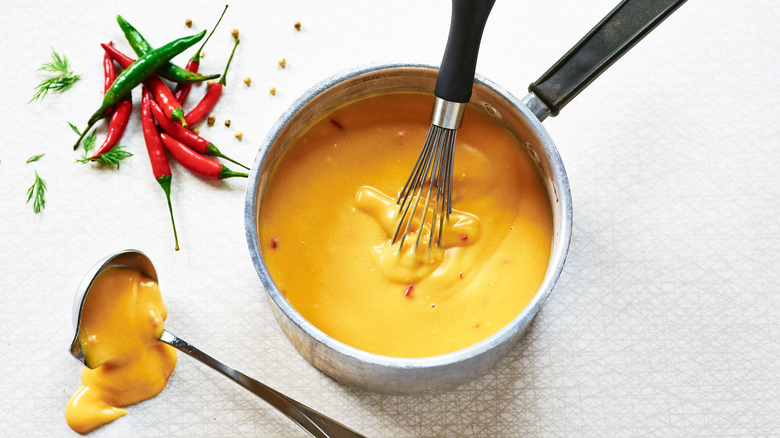12 Tips You Need For Perfect Homemade Queso
Queso is the Spanish word for cheese, but it also refers to a delicious dip loved by almost everyone who's ever had the pleasure of tasting it. Queso, also called queso fundido, makes the perfect appetizer when enjoyed with tortilla chips, is an excellent garnish for Mexican food, and much more. Fortunately, this yummy dip is relatively easy to make at home, so you don't have to wait to enjoy it at a restaurant. However, simply putting a block of cheese in the microwave doesn't even come close to doing it justice. If you take that route, you're likely to wind up with a bland dip and an unwanted chunky texture.
When made correctly, queso should be gooey, creamy, smooth in texture, and often spicy. It is also packed with an array of flavors like garlic, tomato, roasted chilis, and more, so you can see why microwaving cheese won't do. As a lover of all things cheese, queso included, I have spent years perfecting my personal queso recipe. I also lived in Mexico for a couple of years and love eating at Mexican restaurants, so I have a good idea of the myriad of ways people make it. Keep reading for the tips you need to make the perfect homemade queso so you can start enjoying it at home, too.
Always shred the cheese yourself
Always start with fresh cheese to give yourself the best chance at making smooth queso. At first glance, the difference between pre-shredded and fresh cheese may not be super apparent, but using one instead of the other can lead to varying results for some recipes. When it comes to making queso, it may be tempting to buy pre-shredded cheese, but there are several reasons you should opt to shred your cheese at home. First, when you shred cheese at home, you start with fresher cheese. As a result, it tends to taste better and is also softer. The softer consistency helps it melt faster and leads to a smoother texture, both of which are essential for queso.
Another reason you should always use fresh cheese is because of the added preservatives found in pre-shredded cheese. Many grated cheeses contain cellulose — a type of wood pulp – and anti-caking agents added to the mix. Even if you aren't concerned about additional preservatives in your food, they can noticeably affect the consistency of cheese once melted. When melted, cellulose and anti-caking agents cause a lumpier, less smooth texture, which is undesirable when making dips like queso.
Add American cheese to create the perfect melty texture
While there are several ways to promote the ideal melty texture in queso dips, white or yellow American cheese is a must. It helps you achieve a smoother, more velvety consistency with a minimal amount of effort. Compared to hard cheeses, like asiago or manchego, American cheese has a softer texture, which leads to smoother queso. American cheese also has a lower melting point than many other cheeses, reducing the time needed to make queso while also helping to prevent lumps from forming in the process.
Choosing fresh American cheese is ideal. However, that may be more challenging than it sounds because many grocery stores only carry pre-sliced American cheese in the cheese aisle. If you find this is the case when purchasing ingredients to make your queso, check in the deli. Often, the deli can cut fresh American cheese for you. If not, buying slices of American isn't going to kill your recipe. Or, in a pinch, you can also use Velveeta. Considering it is a shelf-stable cheese product, it's not fresh, but it will provide you with the same velvety smooth texture once melted. It is highly unlikely to form clumps, either.
Use several cheeses to enhance flavor
Sure, you could easily make queso with one kind of cheese — but why limit yourself when there are so many delicious options? The best quesos contain two or more types of cheese as a way to enhance flavor and give the dish more depth. Of course, you still want to season your queso, but you might be surprised at how much flavor can be added simply by using more than one type of cheese.
In addition to a smooth cheese, like American or cream cheese, cheddar and pepper jack are ideal cheeses for queso. They both have a strong bite that goes well with the other ingredients. Plus, pepper jack adds a touch of spice. Sharp or extra sharp cheddar is preferred, but go with whatever you tend to like most. Monterey jack can also be used instead of pepper jack, especially if you prefer a milder, less spicy queso. Or, you could still use pepper jack and simply skip over adding spicy peppers, which most queso recipes call for. Asadero cheese also makes a fantastic ingredient for queso dips. It is soft, melty, creamy, and has a somewhat mild taste, making it a crowd-pleasing favorite. Asadero is also a Mexican cheese, making it a traditional choice.
Stir in diced tomatoes with their juices
Tomatoes are another traditional ingredient used in queso. They add an acidic element to the dip, plus a bit of sweetness. Tomatoes also add a touch of color to queso, enhancing the visual appeal. For queso, finely diced tomatoes work best because they blend into the ideally smooth texture without adding huge chunks. You can either chop tomatoes yourself or use a can of tomatoes; either way works great when making queso.
If you choose to chop tomatoes at home, Roma or cherry tomatoes are generally your best bet for queso. Once they are diced, add them to the mix, and make sure to add some of the juice along with the diced chunks. The juice has the same bright, acidic flavor and effortlessly blends into the rest of the dip. Just make sure you don't add so much liquid that it makes the queso watery.
If you choose to use a can, select diced tomatoes. There are plenty of brands to choose from, but Ro*tel works perfectly. The Original version contains mild green chilis, tomatoes, and spices that give your queso added flavor. The Mexican Style also includes cilantro and lime, which work well in queso. Whichever type you select, the mild spiciness of Ro*tel ensures everyone can enjoy it.
Use fire-roasted chilis
Most queso recipes call for some type of spicy pepper, like diced jalapenos or green chilis. While simply chopping them into small bits and adding them to your queso will suffice, fire-roasting them beforehand is a serious game changer when it comes to flavor. Fire-roasted chilis add a smoky taste and tend to stand out more in the dip instead of blending in and being overtaken by the other potent ingredients. When you roast peppers, the skins also come off, leading to a smoother texture overall.
Depending on where you live and the time of year, you may be lucky enough to purchase fresh fire-roasted chilis from a roadside stand or farmer's market. If you have this option, this is the most efficient, freshest way to acquire roasted chilis. However, you can also roast peppers yourself at home, either in the oven, under the broiler, or on a grill. It may take a bit of time, especially considering they will need to rest and steam before skinning them, but it is well worth the additional effort and time. Or, if you want to take a more streamlined approach, you may be able to find pre-roasted chilis in the grocery store. They probably will be canned or jarred, so they won't be as fresh, but they will still have the deep, smoky flavor that makes them so delicious.
Caramelize onions or sauté the whites of green onions first
Whether you choose green or white onions for your queso, cooking them a bit adds a rich taste to your dip. Onions are delicious raw, but sautéing them brings out a deeper flavor that compliments queso perfectly. Green onions are probably the most common type of onion used in queso. They have a bright flavor and a fresh taste that pops in dips of all kinds. To enhance their flavor even more, try sautéeing the white stems of the stalk first. Simply cut the whites off, dice them into smaller pieces, and cook them over medium heat for a few minutes before mixing in other ingredients. Then, you can mix the chopped green parts in at the end or use them as a garnish to get varying onion flavors.
If you choose white onion for your queso, caramelizing them turns the flavor up a notch. It gives them a sweet aroma and a potent taste that goes wonderfully with cumin, garlic, and all of the other ingredients in queso. Caramelizing onions is easy if you have patience; just don't expect it to be a quick process. If you are roasting the chilis for your queso at home, try to caramelize the onions simultaneously to save yourself some time.
Season generously and taste as you go with tortilla chips
Aside from the main ingredients we discussed, you also want to season your queso generously. Seasonings help you achieve the right flavor and ensure you avoid doing all the work just to wind up with a bland-tasting dip. The most common seasonings in queso include salt, pepper, cilantro, cumin, cayenne, garlic, smoked paprika, and chili powder. If you prefer a milder queso, you can always skip the cayenne and chili powder, but many people prefer spicy queso.
Following a recipe is great, especially if you need to become more familiar with queso, but you can also season it to your particular taste. Simply add small amounts of each seasoning and taste as you go to prevent adding too much. You can always add more, but you can't remove a spice once it has been added. The best way to taste test your queso is with the tortilla chips you plan to eat it with. Tortilla chips are generally pretty salty, and some also have a lime flavor, so testing your queso with the chips helps prevent over-salting. Testing with the chips also gives you a more accurate representation of how the dish will taste when dipping. If you want to take it a step further, you can always make the tortilla chips, too.
Use fresh garlic
There are many tips for cooking with garlic, but one of the most important is to use fresh garlic whenever possible. Just like any other recipe, fresh garlic makes a world of difference when making queso. Fresh garlic has a distinct flavor and spiciness that is noticeably diminished in different forms, like jarred or powdered garlic. Compared to chopped garlic in a jar or dried garlic, fresh garlic has a much more potent aroma and taste, leading to a better flavor in queso. In addition, fresh garlic won't get lost amidst the other bold flavors of queso.
After chopping your fresh garlic, try cooking it with the onions for a minute or two before you start building the rest of the recipe. Just make sure not to burn the garlic, which happens pretty quickly if you aren't paying attention. Sautéeing the garlic with the onions and butter helps all the flavors blend, so you get an even distribution when you add the cheese and other ingredients.
A blend of cornstarch and evaporated milk ensures a silky texture
In addition to using American cheese, a blend of cornstarch and evaporated milk is the perfect way to achieve the silky texture desired in queso. It also prevents it from hardening too quickly while it cools. The cornstarch acts as a thickener, giving the queso a bit more body, which helps it stick to chips better. Pairing it with evaporated milk helps smooth out the texture of the dip and ensures you get the ideal velvety consistency overall. If you don't use evaporated milk and cornstarch, your queso can easily become lumpy and quickly harden when cooling — things we certainly want to avoid. The oil in the cheese could also start to separate, leaving you with a greasy mess on top of the dip.
The best way to add evaporated milk and cornstarch to your queso is to let the pair simmer and slightly thicken by themselves. Then, add it to the sauce. Adding the cornstarch to evaporated milk first helps it mix into the other ingredients more evenly than if you add the powder by itself. Allowing it to thicken first also helps minimize the time the cheese spends cooking, which, in turn, prevents burning.
Cream cheese is another fantastic way to eliminate lumps in queso
If you are struggling to eliminate lumps in your queso, either from the cheeses or the cornstarch, cream cheese is another secret ingredient that can help you achieve a smooth texture every time. You can use cream cheese along with the methods listed above (American cheese and cornstarch with evaporated milk), or you can use it as a convenient alternative. Either way, adding cream cheese to your queso smoothes out the texture exceptionally well. If you think about it, this is not too surprising since it is used as the base of many other dips. Cream cheese also has a mild, slightly tangy taste that brings out the other Mexican flavors without overpowering them.
When using cream cheese, it is best to bring it to room temperature first so that it mixes in quickly and easily. Take it out of the fridge a couple of hours before you start making the dip, and it should be soft enough for you to spoon in dollops. If you forget to soften the cream cheese first, you can always cut it into small chunks; you'll just have to stir it for a while longer to mix it thoroughly into the rest of the queso.
Infuse queso with tequila to give it a delicious agave flavor
Once you've mastered making the perfect creamy dip, you can also try infusing queso with tequila for some added flair. It may seem like an unusual ingredient, but when you consider all the other Mexican flavors in the dip, it only makes sense that they would go together. Tequila has a rich taste with bright citrus elements and earthy agave, all of which perfectly complement queso. Don't get too excited, though. All of the alcohol burns off during the cooking process.
You have two options if you want to enhance your queso with tequila. First, you can add a splash of it when sautéeing ingredients. This is the easiest, most straightforward method. Or, if you prefer a bit of a show, you can top your queso with a splash of tequila and flambé it as a finishing touch. Either way, the earthy agave tasting notes help you create drool-worthy queso you and your guests are sure to love. For a more robust, earthy flavor, use a reposado or anejo tequila. They are aged for longer, leading to a more oaky taste. If you prefer a brighter, grassier taste, use a silver tequila.
Stir frequently to prevent burning
The final and potentially most crucial tip you need to make perfect homemade queso is to stir your dip frequently while it is cooking. As you probably know, cheese melts somewhat quickly on the stove, and it can also stick to the pan with surprising speed. The only way to prevent burning is to stir it frequently. You should be mixing it almost continuously to get the best results and the smoothest consistency. This may sound like a lot of work, but it won't take long, especially if you use softer cheeses with a low melting point.
In addition to staying on top of your queso by stirring it frequently, you also want to keep the heat relatively low. You might start with the heat set to medium while sauteing onions, garlic, tomatoes, chilis, and seasonings, but once the cheese is added, you want to turn the burner down to low. Otherwise, it will likely burn, even if you stir it continuously.
